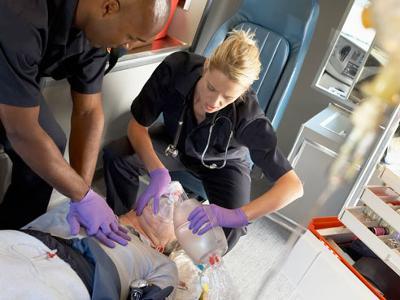Conventional CPR Best For Cardiac Arrest

Any person who is unresponsive and not breathing normally should be treated with conventional CPR.
The New Zealand Resuscitation Council made the statement to clarify misconceptions that compression-only CPR, also known as 'hands-only CPR', is an acceptable alternative when being trained in basic life support and First Aid.
Conventional CPR, including breaths and compressions, produces the best survival rates under most circumstances. Hands-only CPR is promoted in some countries because it is simple to teach and can encourage bystanders to act when they might otherwise be reluctant.
Conventional CPR is much better for children, drowned people and those who have longer periods of arrest.
Hands-only CPR is good for sudden witnessed collapse in adults, which is a minority of events.
Chest compression rates of 100-120 compressions per minute have been shown to produce the best rates of survival. Aiming for a rate of 100 will lead to many rescuers compressing at slower rates. First Aid educators should teach people to aim for a compression rate between 100-120.
The chest should be compressed by at least one-third the diameter of the person receiving CPR. Rescuers should attempt two breaths after each cycle of 30 compressions. The rule of thumb for CPR is '30-to-2, no matter who'.
Any person receiving CPR should have access to a defibrillator as a priority.
The New Zealand Resuscitation Council is very grateful to all who promote CPR as an easy and potentially vital means of achieving the best possible outcome for New Zealanders who may suddenly collapse.
For more information about CPR and Basic Life Support please see nzrc.org.nz/guidelines.
Story Credit: http://www.scoop.co.nz/stories/GE1703/S00079/conventional-cpr-best-for-cardiac-arrest.htm


